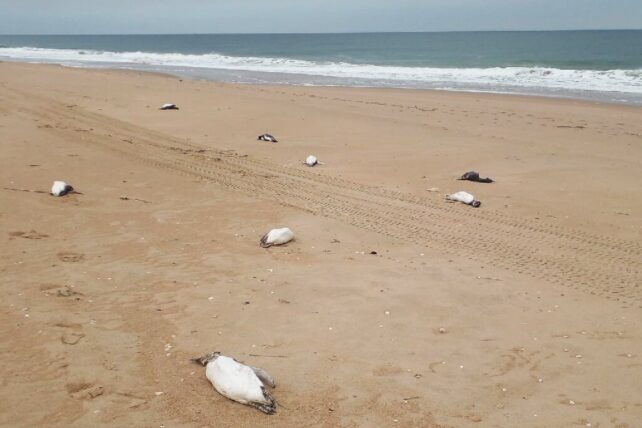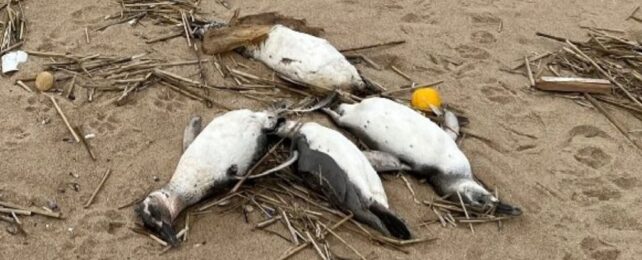Roughly 2,000 Magellanic penguins have washed up dead on the beaches of Uruguay this July with empty stomachs and "tremendously thin" bodies.
"This is mortality in the water," Carmen Leizagoyen, who works at Uruguay's Environment Ministry, told AFP.
"Ninety percent are young specimens that arrive without fat reserves and with empty stomachs."
The cause of the mass die-off is still unknown, but scientists are concerned that extreme climate changes are contributing to the rapid decline of the species.

Since 2004, experts have considered Magellanic penguins (Spheniscus magellanicus) to be 'near threatened', and in the past 30 years or so, it's become unnervingly common for hundreds of these birds to show up dead on the east coast of South America.
In 2010, for instance, more than 550 penguins died of starvation on the beaches of Brazil.
Two years later, another 745 penguins washed up dead on the nation's coastline.
Interestingly, these mass die-offs aren't necessarily occurring for the same reason.
Some years the main threat may be rising temperatures – like in 2019, when 354 penguins died in Argentina at their nesting sites from an extreme heat wave.
In other years, the main cause could have more to do with hypothermia, storms, or starvation.
It all depends on where these penguins are at in their migration.
For most of the summer, Magellanic penguins nest in southern Argentina. Come winter, however, they make their way north in search of food and warmer water.
It's not uncommon for some juveniles to die during this journey, but the recent death toll has gotten out of control.
This year, experts suspect a subtropical cyclone off the coast of Uruguay may have weakened an already starving population. Other sea birds, turtles, and sea lions have also washed up dead in surrounding areas, supporting this theory.

The dead birds scattered across Uruguay's beaches tested negative for avian influenza, but their stomachs had been empty for days, and their feathers showed a surprising lack of grease, which repels water and insulates the birds against cold temperatures.
The confluence of deadly factors may have been too much for many young penguins to handle.
"Food shortages as a result of overexploitation of South Atlantic fishing and the impact of climate change on offshore currents could be the causes of this sad event," explains the animal welfare organization SOS Rescate de Fauna Marina on Facebook.
"The hypothesis that it could be storm-related has also been handled. But really, the lack of power is the triggering factor that they couldn't have weathered the storm."
Scientists have known that Magellanic penguins have struggled to feed themselves since the 1990s, but little has been done in the intervening years to ensure the sustainability of anchovies, sardines, and other tasty penguin snacks in this part of the world.
Overfishing is a key factor, but so are changing weather patterns from climate change, which can alter the distribution of key ocean prey.
In 2009, breeding pairs of Magellanic penguins in Argentina had gone from a population of 300,000 in the 1990s to just 200,000.
Unless something changes, the mass death of this species could very well become an annual event.
